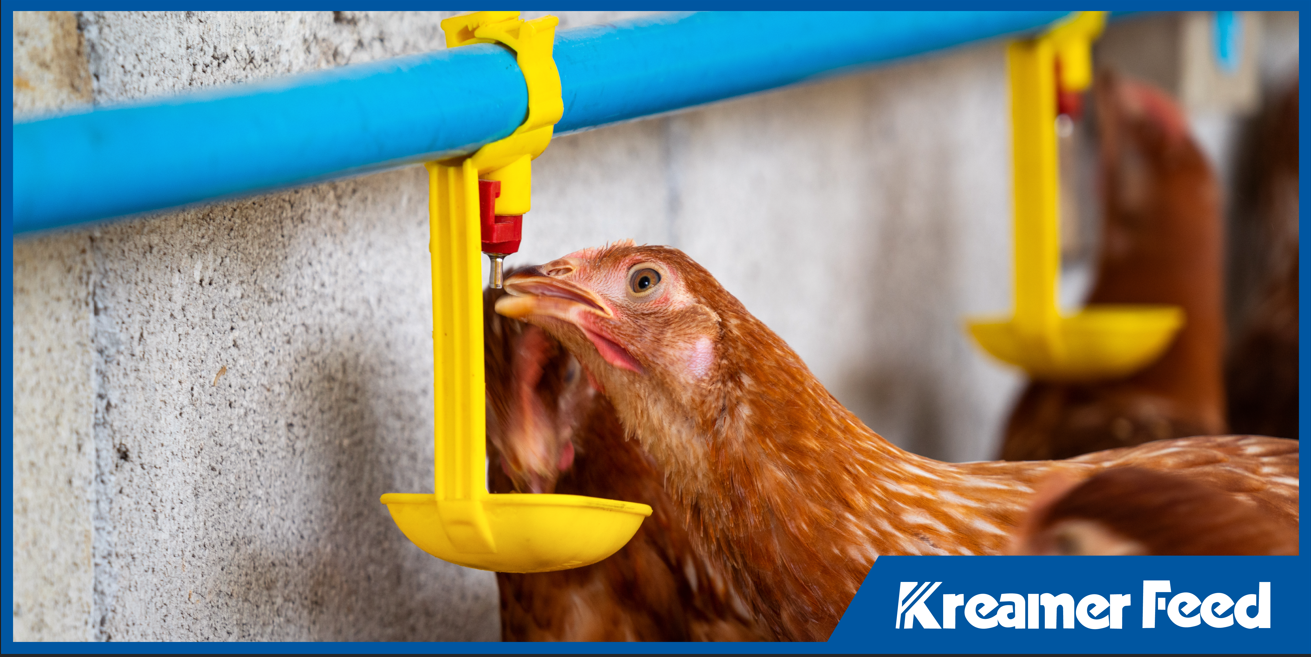
In any discussion about livestock nutrition, feed often takes center stage. While balanced rations are essential for animal growth, health, and productivity, the importance of water in animal nutrition cannot be overstated. Hydration and nutrition go hand in hand, and without sufficient water, even the highest-quality feed can’t deliver its full benefits.
Whether you’re managing poultry, pigs, cattle, or goats, understanding how hydration and livestock feed work together is key to optimizing animal performance and overall farm success.
The Role of Water in Animal Health
Water is a critical nutrient. It regulates body temperature, aids digestion, carries nutrients through the bloodstream, and flushes out toxins. On average, livestock consume 2 to 5 times more water than feed. That means water intake directly influences feed intake and how effectively animals utilize the nutrients in their diet.
A drop in water consumption can quickly lead to reduced appetite, poor weight gain, heat stress, lower milk or egg production, and even disease. That’s why ensuring animals have constant access to clean, cool water is as important as providing quality feed.
Water Intake and Feed Conversion
Feed conversion, the efficiency with which animals turn feed into growth, is a cornerstone of farm profitability. But many producers underestimate how much water impacts this calculation.
Poor hydration decreases the digestive system’s ability to break down and absorb nutrients, which directly reduces feed efficiency. In contrast, optimizing hydration for farm animals ensures the digestive tract remains functional, pH levels are balanced, and the body can transport nutrients to cells more efficiently.
Studies have shown that animals with limited access to clean water consume less feed and gain less weight, resulting in poorer performance and higher feed costs per pound of gain.
The Impact of Water Quality on Livestock
Clean water isn’t just about volume. It’s also about quality. Water contaminated with bacteria, algae, high nitrate levels, or heavy metals can negatively impact animal health, lower feed efficiency, and lead to illness or death in severe cases.
Water quality for livestock should be tested periodically, especially if the source is a pond, well, or stream. Key indicators to watch include:
- pH balance
- Bacterial contamination
- Nitrate and sulfate levels
- Salinity or hardness
- Temperature (especially in hot or cold weather)
If water tastes bad or is too warm, animals may drink less, which again circles back to reduced nutrient absorption and poor growth.
Hydration Tips for Healthier Animals
To get the most out of your feed program, follow these hydration best practices:
- Provide clean water daily. Flush and refill troughs or drinkers regularly.
- Test water quality, especially if animals seem off-feed or are showing signs of illness.
- Monitor temperature. In summer, keep tanks shaded or underground. In winter, use de-icers to prevent freezing.
- Adjust for stage of life. Lactating animals, fast-growing young stock, and animals in hot climates will require more water.
- Inspect delivery systems. Regularly check for leaks, clogged lines, or slow-flowing nipples in automated systems.
Feeding and Hydrating for the Bigger Picture
Good nutrition isn’t just about what animals eat. It’s about how well their bodies can absorb and use it. Without adequate water, the most carefully formulated feed becomes far less effective. That’s why modern feed management must include hydration as a critical component of livestock nutrition strategies.
Proactive water management is not only beneficial for animal health and performance but also supports long-term goals in sustainable farming. Healthy animals with optimized digestion require fewer medical treatments, grow more efficiently, and contribute to a more resilient and profitable farm system.
Feed Smart. Water Wisely.
At Kreamer Feed, we believe in a whole-animal approach to livestock care. Since 1947, we’ve supported farms with premium feed products that promote health and performance, but we also know that feed alone isn’t enough. Hydration plays a vital role in every successful nutrition plan. Whether you’re raising poultry or livestock, combining clean water with high-quality feed helps your animals thrive and your farm succeed.